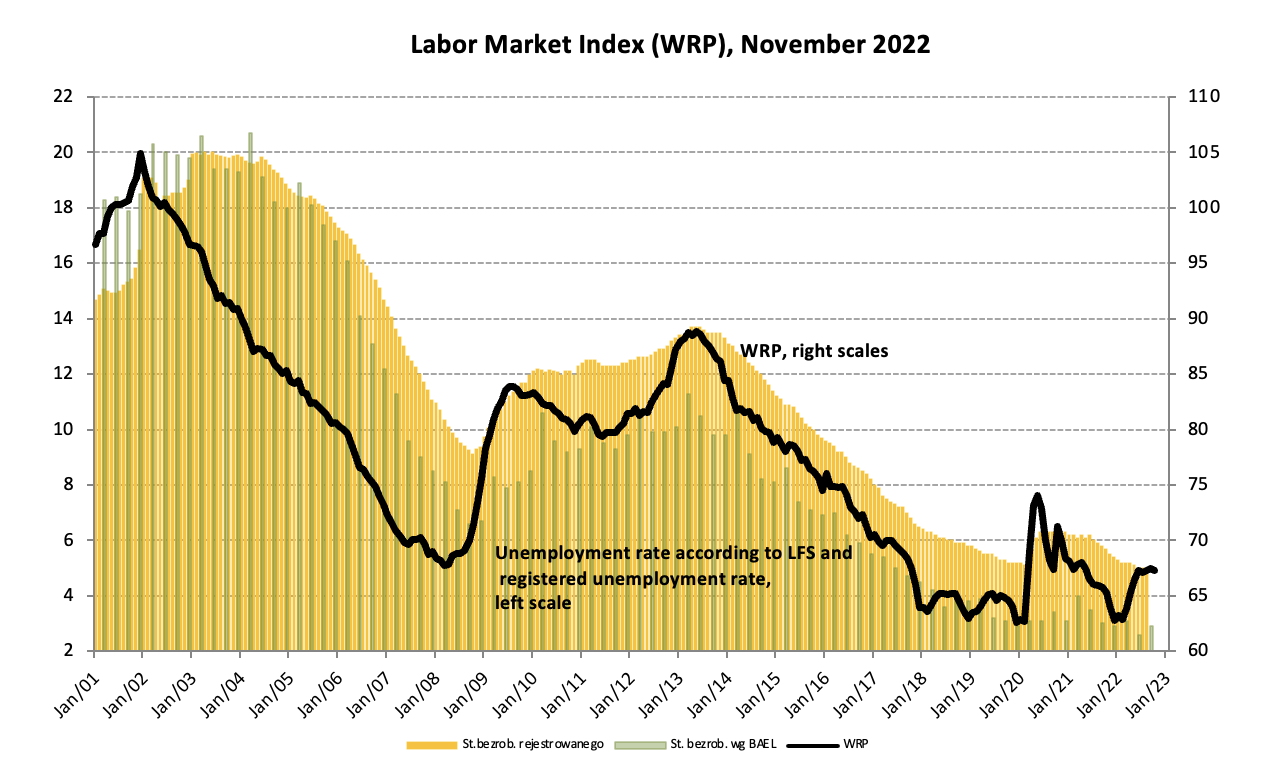Stagnant Polish job market
The Labor Market Index (LMI), which provides advance information on future changes in the size of unemployment, declined in November, offsetting the slight increase recorded in October this year. In fact, it has remained at a similar level since June this year, showing no tendency to either increase or decrease. This is happening amid a marked slowdown in the economy, high uncertainty and rising inflation. The stabilization of the labor market, and thus the stabilization of unemployment and its rate, is facilitated by:
- the demographic structure of our society,
- the influx of refugees from Ukraine, who may periodically fill some of the emerging vacancies, - the multi-year slump in investment, which is leveling the demand for new skills and qualifications, and - the previous negative experience of employers in attracting workers with the right skills.
Symptoms of deterioration in the labor market are visible at the moment in only one component of the WRP, namely the data on the number of people deregistering from labor offices due to employment. The other components foreshadow a decrease or stabilization in the value of the index, thus forecasting no change in the unemployment rate.
The number of people deregistering from the census of the unemployed as a result of taking a job is characterized by very high volatility. Nevertheless, the outflow from unemployment to employment was 35% less than the inflow of job offers recorded in the same period. This is partly explained by the structure of the registered unemployed, and the rather high proportion of long-term unemployed, that is, those with depreciated skills and, consequently, a low level of employability. At the same time, about 10% fewer unemployed people registered with labor offices in October, compared to September. Despite the rather high-profile media announcements of so-called "group layoffs" at some workplaces, the number of registered unemployed who were dismissed for reasons attributable to employers in October decreased slightly. These factors resulted in a deceleration in the growth of the aggregate amount of unemployment benefits paid, which took place in October. Over a longer period, i.e. from May to September this year, the aggregate amount of benefits paid increased by 14%.
On the demand side, more negative forecasts are breaking through. Assessments of the overall economic situation of industrial companies formulated by managers admittedly did not change on a monthly basis, but are deeply negative. Forecasts of employment plans have improved very slightly, but the balance of this question is also deeply negative. At the same time, the number of job openings referred to labor offices, although not much changed in October compared to September, has been steadily declining since April 2022. Thus, the above data indicate a consolidation of the status quo in the size of employment at companies, which, while not massively laying off, are also not hiring.
Source: BIEC









